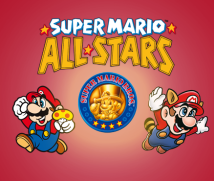3. The Grand Culmination
Miyamoto-san, could you relate for us how the 25-year history of Super Mario Bros. originally began?
Sure. About two years before Super Mario Bros., we made the arcade version of Mario Bros. , but the screen didn't scroll, the background was black, and it was sort of plain. So I decided to test out something like Mario Bros., but which scrolled, had a bright background, and had bigger characters moving around.
And that was what you mentioned earlier, the test version with the moving square.
Right. I don’t have a clear recollection if it was a square or some simple picture. I wanted the screen to scroll, so at that point, we gave up on a two-player game.
Oh, I see. Two people could enjoy playing Mario Bros., because it didn't scroll sideways. Even if you could get the screen to scroll, keeping multiple characters on the same screen - like the simultaneous four-person play in New Super Mario Bros. Wii 11 wasn't something you could do with the technology back then. 11 New Super Mario Bros. Wii: An action game released for the Wii console in December 2009 in Japan.
Right. But in Devil World, we had already successfully managed to move characters twice as big as characters in the previous games.
In other words, you brought in the partial scrolling technology from Excitebike, which allowed you to scroll part of the screen, and the two-character mode technology from Devil World, which allowed characters twice the size of those in Mario Bros.
Right. It was a combination of elements from a variety of previous games.
To go into a little more detail, the SRD members who had made, for example, the springs in Donkey Kong Jr. 12, were also participating in the Super Mario Bros. project, so they brought that straight in. 12 Donkey Kong Jr.: An action game that appeared in arcades in 1982. The Family Computer System (Famicom) version was released in July 1983 in Japan.
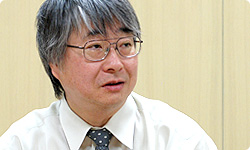
Looking at these specs, it says, "Add refinements focusing on Donkey Kong's slopes, lifts, conveyor belts and ladders; Donkey Kong Jr.'s ropes, logs and springs; and Mario Bros.'s enemy attacks, enemy movement, frozen platforms and POW Blocks.
So it truly was a grand culmination of other games. It was the year before the Disk System came out, and we intended it to be the last game we released on a cartridge. We wanted to put in as much as possible that would make people think, "Nintendo sure does know cartridges!" and "How did they do that?!"
Given the overall power of today's gaming consoles, we can display just about anything, so only a pro can look at a game today and is tempted to ask "How did they do that?" But in the days of the Famicom games, the hardware restrictions were quite severe, and there wasn't a lot we could do. But by slipping around those restrictions and achieving something new, the public wouldn't have seen anything like it, so we could really impress players with something new they'd never seen in another game, and make them think, "How did they do that?"
That's right. We tried to pull in good elements from a variety of games, but perhaps the most important one was Excitebike. For example, the idea for warps came from there.
How so?
The arcade version of Excitebike had three levels, and you could choose where you wanted to start playing. That was because we thought people who were good would want to start at the advanced levels right away. Of course, if you started at World 7 on Super Mario Bros., it would be too difficult, but we thought that it would be nice if people who were good could easily go from World 1 to World 8.
Oh, so that's where the idea for warps came from. Come to think about it, we couldn't save on the cartridges back then.
Right. Every time, you had to play from the beginning. So we made warps possible for people who want to play to the end. If the players figure out the warps, they can jump to World 8 right away. That was like how you could choose which course you wanted to start on in Excitebike.
Oh, so Super Mario Bros. was a grand culmination in a number of different ways.
We purposely made it to be one.
When you first made Super Mario Bros., you used 256-kilobit memory for the first time.
That's right. The characters stayed at 64-kilobits, though.
Since the switch to the Disk System was already coming up and disk storage space was one megabit, you wanted to pack into a cartridge as much as possible, and that led to the birth of Super Mario Bros.
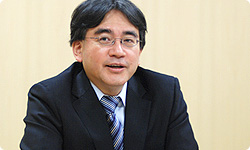
Right. But was I the only one who thought that way? Nakago-san, did you intend to pack in all the technology from the previous games?
Well, we'd always been packing things in, like cutting back on certain visuals in one spot to beef up the programming in another.
You had built up a lot of know-how in packing stuff in.
Back then, we scrambled around for open memory. For example, 1 block was 3 bytes, maybe 2, so if there were 20 bytes open, you could put in 10 blocks. Miyamoto-san would say, "I want to put in 10 more blocks," and throw them in. You'd rapidly run out of memory that way, right? Then, Kondo-san was about to compose the ending music, so I asked, "How many bytes do you need?"
That's right! (laughs)
He said he could loop a song with 40 bytes. And 20 bytes were left over, so Miyamoto-san said, "Let's make a crown!"
I wanted to make a crown as a reward for people who got ten or more extra turns. (laughs)
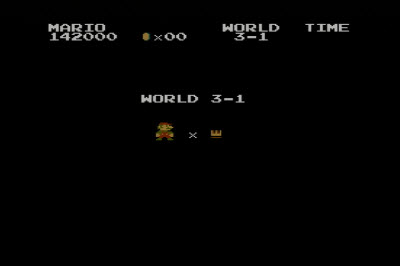
We put that in at the very, very end.
Usually you would leave about 100 bytes as a precaution against bugs that might need to be fixed, but we were reaching the end of development and there didn't appear to be any bugs, so we started using up the leftover space, and at the end they said, "There are eight bytes left, so is there anything you want to put in?" and (looking extremely happy) I answered, "I really wanted to put some blocks here!" (laughs)
(laughs)
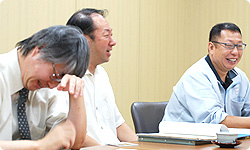
Then when I did, I said, "If any bugs show up, don't look at me!" (laughs) It was fun going back and forth like that.
It really was.
Way back when, there was a TV show called Gacchiri Kaimasho.13 13 Gacchiri Kaimasho: A shopping game show produced by Mainichi Broadcasting System. It aired from 1963 to 1975.
Yeah, that's right. (laughs) A shopping game show.
For example, there'd be a 100,000-yen course, and all kinds of products like refrigerators and televisions without prices on them would be placed around the studio.
You had to shop within 100,000 yen, and the contestants would start by choosing the more expensive items and throw them in the shopping cart. If you went one yen over, you were out.
At the very end, they'd throw in some instant curries.
Right, right. You could adjust about 100 yen with the curry. (laughs)
Three curries add up to 300 yen, so...
They'd be like, "I bet this'll come out perfect!"
(laughs)
We were just like that! But we knew the prices. (laughs)
